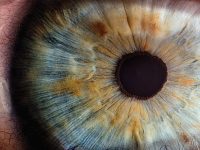
The communication of biotechnology has played a key role in recent years. The great advances made and the speed with which new genetic editing techniques are implemented raise enormous expectations but also concerns. Good communication of the application of biotechnology in different fields – medicine, agriculture, industry – must be accompanied by a constant dialogue between scientists and society.
The idea of this monographic came from the II Conference of the Association of Biotechnology Communicators (AcB in its Spanish initialism), of which I am a member. It was held in Valencia a couple of years ago, and some of the topics that aroused the most interest, debate and participation – such as the constant flow of new information about CRISPR, animal experimentation or the importance of understanding what information a DNA analysis can provide – have served as the basis for some of the documents in this issue. Others, such as the public perception of biotechnology and the importance of the use of metaphors to explain some biotechnological processes, complete this multifaceted view of communication and biotechnology.
The works that illustrate this monograph are the work of the artist Jorge Carla (Madrid, 1974), who, through shapes and colour stains, explores and reflects on the aspects of biotechnology that are most suggestive to him.





